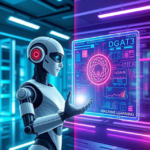Hey there! If you’ve ever wondered, “What’s the difference between AI and machine learning?”, you’re not alone. These terms are everywhere these days, but they’re often used interchangeably, which can be pretty confusing. Don’t worry—I’m here to break it all down for you in a way that’s simple, clear, and easy to understand. By the end of this post, you’ll know exactly how AI and machine learning are different—and how they work together to power some of the coolest tech out there.
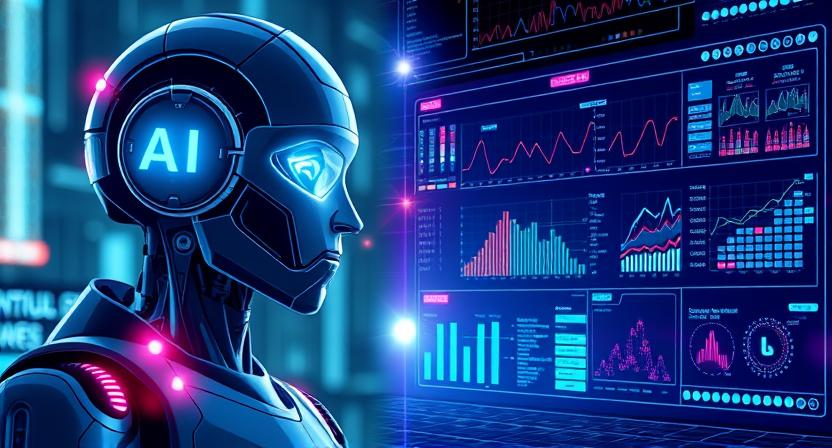
What is Artificial Intelligence (AI)?

Let’s start with the basics: Artificial Intelligence (AI). In simple terms, AI is all about creating machines or systems that can perform tasks that usually require human intelligence. Think of things like problem-solving, decision-making, understanding language, or recognizing patterns. The goal of AI is to make machines smart enough to think and act like humans.
AI in Everyday Life
You might not realize it, but AI is already a big part of your daily life. Here are a few examples:
- Virtual Assistants: Siri, Alexa, and Google Assistant are all powered by AI. They can answer your questions, play music, set reminders, and even tell you jokes.
- Self-Driving Cars: Companies like Tesla use AI to create cars that can drive themselves, navigate traffic, and avoid obstacles.
- Recommendation Systems: Ever notice how Netflix always seems to know what you want to watch? That’s AI analyzing your preferences and suggesting shows you’ll love.

What is Machine Learning (ML)?
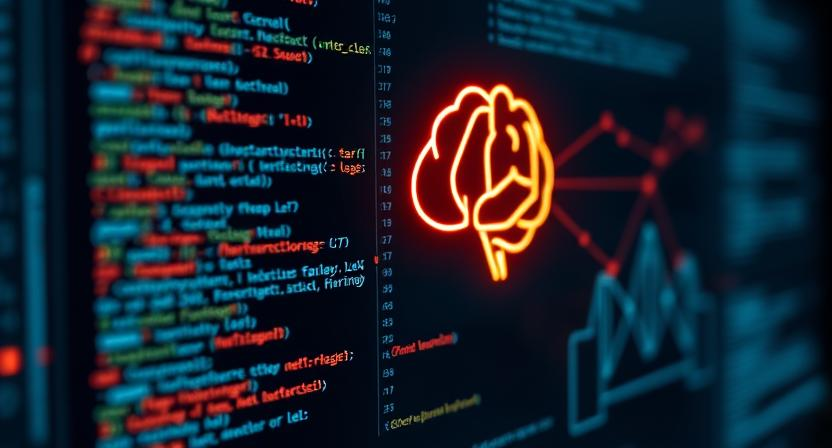
Now, let’s zoom in a bit. Machine Learning (ML) is a subset of AI. It’s the part of AI that focuses on teaching machines to learn from data. Instead of being explicitly programmed to do a task, ML systems use algorithms to analyze data, identify patterns, and improve over time. In other words, ML is all about learning from experience.
ML in Action
Here are some real-world examples of machine learning:

- Spam Filters: Your email inbox uses ML to learn which emails are spam and which are important. Over time, it gets better at keeping your inbox clean.
- Facial Recognition: Apps like Facebook use ML to recognize faces in photos. The more photos it processes, the better it gets at identifying people.
- Predictive Text: When your phone suggests the next word you’re about to type, that’s ML in action. It learns from your typing habits to make accurate predictions.
Key Differences Between AI and Machine Learning
Okay, let’s get to the heart of the matter. Here’s a simple breakdown of how AI and ML differ:
| Aspect | Artificial Intelligence (AI) | Machine Learning (ML) |
|---|---|---|
| Definition | A broad field focused on creating intelligent systems. | A subset of AI that enables machines to learn from data. |
| Scope | Includes ML, robotics, natural language processing, and more. | Focuses specifically on data-driven learning. |
| Goal | To create systems that can perform tasks like humans. | To enable machines to learn and improve from experience. |
| Dependency | Can work without ML (e.g., rule-based systems). | Relies on data and algorithms to function. |
| Examples | Self-driving cars, deepseek AI chatbots, expert systems. | Recommendation systems, fraud detection, image recognition. |
How AI and Machine Learning Work Together
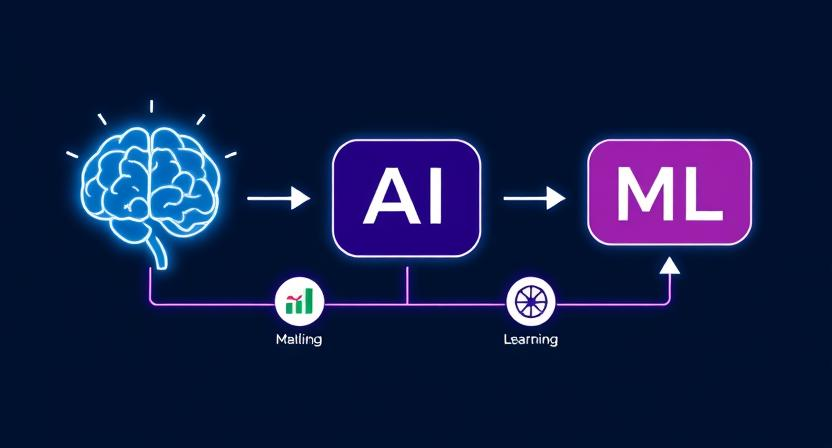
Here’s the cool part: AI and ML work hand in hand. Think of AI as the big picture and ML as one of the tools that make it happen. For example:
- AI provides the goal: Let’s say we want a system that can recognize cats in photos.
- ML provides the method: We feed the system thousands of cat pictures (and some non-cat pictures) so it can learn to identify cats on its own.
Without ML, AI would rely on rigid rules and wouldn’t be as adaptable. But with ML, AI systems can learn, improve, and even surprise us with their capabilities.
Why Understanding the Difference Matters
You might be wondering, “Okay, but why should I care?” Here’s why:
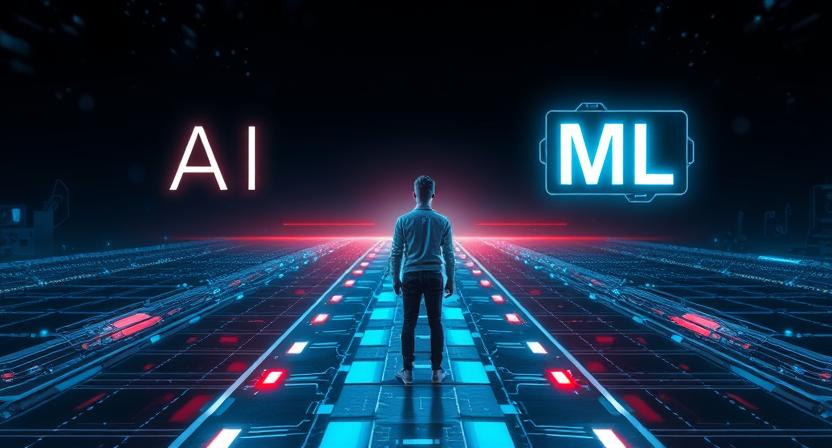
- Clarity: Knowing the difference helps you understand how technologies work and what they can do.
- Career Opportunities: AI and ML are booming fields. Understanding their nuances can help you decide which path to pursue.
- Business Applications: If you’re running a business, knowing whether you need AI or ML can save you time and money.
Conclusion
So, there you have it! Artificial Intelligence (AI) is the big umbrella term for creating intelligent machines, while Machine Learning (ML) is a specific technique that helps those machines learn from data. Understanding the difference between AI and machine learning isn’t just for tech geeks—it’s for anyone who wants to stay informed in our rapidly evolving world.
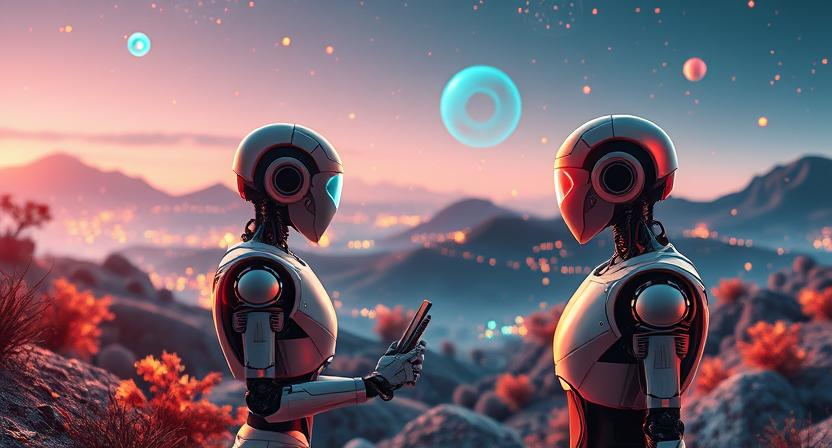
Next time someone asks, “What’s the difference between AI and machine learning?”, you’ll have the perfect answer. And who knows? Maybe you’ll even inspire them to learn more about these fascinating technologies.
If you found this blog helpful, don’t forget to share it with your friends. And if you have any questions, drop them in the comments below—I’d love to hear from you!



